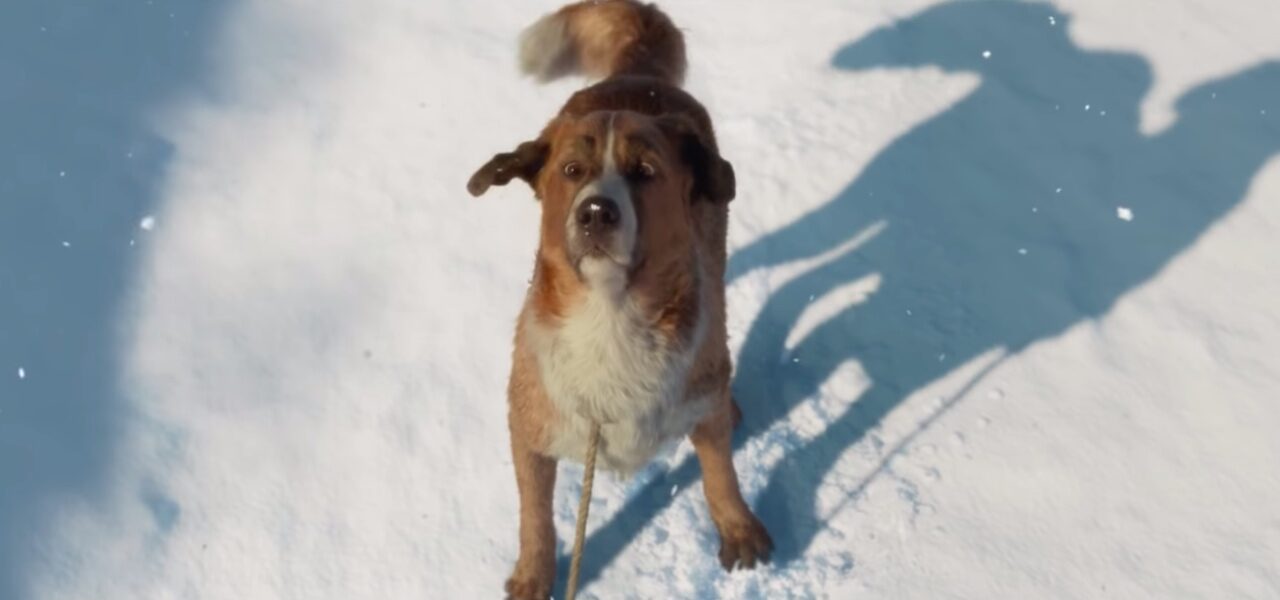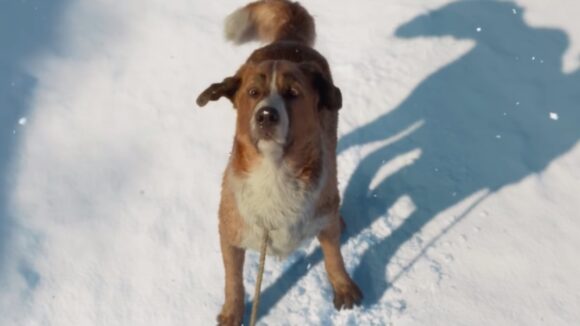

‘The Call Of The Wild’ Is Let Down By Its Animation, Say Critics
As cgi pushes into photorealism and animated characters play an ever-bigger role in live-action blockbusters, the creative hazards of this approach are becoming apparent. The latest case in point: The Call of the Wild, directed by animation veteran Chris Sanders, which is released today by the Walt Disney Company’s 20th Century Studios (formerly 20th Century Fox).
The film is based on Jack London’s beloved novel of the same name, which recounts the adventures of the canine Buck through the Yukon of the Gold Rush age. In past adaptations, Buck was played by real dogs; the advancement of both animation technology and animal rights legislation has made that option less viable, and here he’s rendered in highly naturalistic cgi. The human characters are performed by a live-action cast led by Harrison Ford.
The hybrid style hasn’t gone down well with critics, who broadly agree that the animation of Buck is unconvincing as a real dog. While many recognize the sophistication of the animation and vfx (which were led by MPC’s studio in Montreal, with Erik Nash serving as vfx supervisor), they tend to compare the film unfavorably with both cartoonish animation and the purely live-action versions of the past.
Some reviewers liken the overall effect to Disney’s recent remake of The Lion King, which was also animated by MPC. However, Sanders has distinguished his film from that one, pointing out that Buck is subtly stylized to compensate for the fact that he doesn’t speak. This Indiewire article has more on the subject.
At the time of writing, The Call of the Wild has a 65% critics’ score on Rotten Tomatoes. Here’s a sample of the reviews:
Brian Lowry, CNN:
In this case, though, the blessings of technology actually undermine the movie in significant, distracting ways. Because while we have seen plenty of animals animated in a realistic-looking way, people are so familiar with dogs and how they move that seeing one anthropomorphized in this fashion consistently takes you out of the story… The obvious artifice undercuts any tension, despite beautiful scenery and a musical score that works overtime to build excitement.
Johnny Oleksinski, New York Post:
The filmmakers can honestly say, “No dogs were harmed during the making of this movie”… But can cgi replicate the lovable spontaneity of man’s best friend? Not yet. Buck is adorable in spots, but his movement (with motion-capture actor Terry Notary) lacks the agility and jerkiness of a real dog. You never believe Buck is the genuine article, so moments of danger and even cute mannerisms don’t land.
Yolanda Machado, The Wrap:
Speaking of animals, we have to talk about the unnecessary overuse of cgi. Every single animal in The Call of the Wild is a product of cgi, and not once is the audience fooled into thinking these animals actually exist. There’s a deadness to the eyes that, for this dog owner, was a bit uneasy to watch. At moments, it feels like the film can’t decide how humanized they wanted Buck and the other animals to feel, whether to give them human emotion or to let their animalistic traits take over. As a result, neither is ever captured quite properly.
Tim Robey, The Telegraph:
It’s impossible to know how London might have felt about his icy Yukon wastes being dealt with on a sound stage, on the understanding that mountains, sky, townships and avalanches could all just be shipped in by mouse in post-production. Scenery has been painted on as if the Gold Rush were just a jolly, struggle-free theme park for Frozen fans, with Northern Lights swirling glamorously everywhere you look.
Owen Gleiberman, Variety:
The filmmakers employ a blend of live action and digital enhancement, and I guess you could say it’s an achievement that we can’t totally tell where the one leaves off and the other begins. But what we do know is that everything we’re seeing is a shade faster, more bumptious, more animated than real life. Does that mean it’s more exciting? I’d say that makes it less exciting.
Nell Minow, RogerEbert.com:
Instead of getting caught up in the story, I kept wondering how Disney achieved the effects, like the interactions between the cg dog with the real-life people and props around him. A lot of work clearly went into scanning a dog from every angle, and getting the muscles, fur, weight, and shape to look real. But the dog still seems synthetic compared to the animals in movies like A Dog’s Purpose and Disney’s own annual nature films (even compared to fully animated characters in the original 101 Dalmatians and Lady and the Tramp).
Anthony Lane, The New Yorker:
The [animation] is remarkable, yet it’s still a hairbreadth away from credible, and I reckon that the pooches in the [dog-friendly screening I attended] could tell the difference. They could spy a big Buck, and they could hear the rustle of his digital fur, but they couldn’t smell him. Maybe that’s why they kept so quiet.
Sanders cut his teeth at Disney, serving in various capacities — including storyboard artist, character designer, and voice actor — on its 1990s features, before writing and directing Lilo & Stitch with Dean DeBlois. Their partnership continued at Dreamworks, where they wrote and directed the first installment How to Train Your Dragon together. Sanders also wrote and directed The Croods with Kirk DeMicco.
As well as Sanders’s live-action debut, The Call of the Wild is the first feature on which he has sole credit as director. The film is produced by Erwin Stoff and executive produced by Diana Pokorny and Ryan Stafford. The adapted screenplay is by Michael Green (Logan, Blade Runner 2049).

.png)